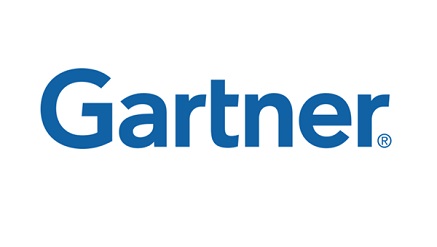E-Business
Gartner says Digital Marketing Budgets Will Increase by 8 Percent in 2015

Marketers are investing in the customer experience to drive business advantage and profitable revenue growth, according to a survey of marketing executives by Gartner, Inc.
The survey found that marketing budgets remained healthy in 2014, with, on average, companies spending 10.2 percent of their annual 2014 revenue on overall marketing activities, with 50 percent of companies planning an increase in 2015.
Digital marketing spending averaged one-quarter of the marketing budget in 2014. The survey found that of the 51 percent of companies who plan to increase their digital marketing budget in 2015, the average increase will be 17 percent.
These findings are included in Gartner’s Digital Marketing Spending report that is based on a survey of 315 individuals located in the U.S., Canada and the U.K. Respondents represent organizations with more than $500 million in annual revenue across six industries: financial services, high-tech, manufacturing, media, retail and transportation, and hospitality. The survey took place in July and August 2014 to gain insight into marketing and digital marketing spending priorities and plans for the future.
“The amount of the marketing expense budget spent on customer experience in 2014 is remarkably consistent across all key survey demographics, averaging 18 percent. The survey also found that the highest marketing technology investment in 2014 is for customer experience. Customer experience is also considered by many companies to be the top innovation project, just edging out product innovation,” said Jake Sorofman, research director at Gartner.
Not only are marketing budgets remaining healthy, they are forecast to grow in 2015, with half of the companies surveyed planning an increase in 2015.
The larger the company, the higher the marketing expense budget as a percentage of revenue — those with revenue of $5 billion or more reported 11 percent, compared with 9.2 percent for those with revenue between $500 million and $1 billion.
Marketing budgets as a percentage of revenue varied widely, with 46 percent spending less than 9 percent of revenue, 24 percent spending between 9 percent and 13 percent of revenue, and 30 percent spending more than 13 percent of revenue.
The 50 percent of companies planning an increase report their average 2015 increase will be 10.4 percent. Of those, the ones that report outperforming competitors said their planned 2015 increase will be 13.6 percent.
“The line between digital and traditional marketing continues to blur,” said Laura McLellan, research vice president at Gartner.
“For marketers in 2014, it’s less about digital marketing than marketing in a digital world. Hence, marketers manage a much more balanced and integrated marketing mix than in previous years, which were characterized by online and offline silos. The resulting digital experience moves customers toward a more self-service buying model, allowing reductions in sales budgets that were designed around older, physical models.”
Sixty-eight percent of respondents said that their company had a separate digital marketing budget. However, it’s difficult to gauge just how much companies are spending on digital marketing because the treatment of budgets varies by company, with some having a digital marketing budget in total (32 percent of respondents), others in detail (36 percent), and yet others that have incorporated digital marketing into each function of the marketing budget (23 percent) or none of the above (eight percent).
As in prior years, the survey revealed that when it comes to allocation of the digital marketing budget by activity, digital advertising takes the top spot. However, there appears to be less difference between this and other activities this year compared with last year, as marketers hedge their bets.
Expenditures for digital advertising will grow in 2015, as brands, ad agencies and publishers invest in ways to deliver more-relevant advertising to people.
Fueling this trend is the use of programmatic media, which allows marketers to target the audience they want and automate bidding rules for ads based on the business value they deliver.
Nevertheless, the survey suggested that in 2015, digital advertising will share its top ranking with mobile marketing.
With digital marketing spending on the rise, respondents were also asked where additional funding was coming from:
“Gartner’s 2014 CEO Survey found that digital marketing was the No. 1-ranked CEO priority for technology-enabled business capability for investment during the next five years,” said Yvonne Genovese, managing vice president at Gartner. “It therefore comes as a little surprise that the digital marketing spending survey found that over 60 percent of companies that justified an addition to the marketing budget for digital marketing obtained incremental funding from elsewhere in the organization.”
E-Business
Cyberattacks: ‘56 Percent of Cases Stem from Existing Logins

A new report by Sophos, ybersecurity firm, has said that attackers primarily gained initial network access—56 per cent of all MDR and IR cases—by exploiting external remote services like firewalls and VPNs using valid credentials.

The 2025 Sophos Active Adversary Report details attacker behavior and techniques from over 400 Managed Detection and Response [MDR] and Incident Response [IR] cases in 2024.
According to the report, the combination of external remote services and valid accounts align with the top root causes of attacks.
For the second year in row, compromised credentials were the number one root cause of attacks [41% of cases]. This was followed by exploited vulnerabilities [21.79%] and brute force attacks [21.07%].
When analysing MDR and IR investigations, the Sophos X-Ops team looked specifically at ransomware, data exfiltration, and data extortion cases to identify how fast attackers progressed through the stages of an attack within an organisation.
In those three types of cases, the median time between the start of an attack and exfiltration was only 72.98 hours [3.04 days]. Furthermore, there was only a median of 2.7 hours from exfiltration to attack detection.
“Passive security is no longer enough. While prevention is essential, rapid response is critical. Organisations must actively monitor networks and act swiftly against observed telemetry.
Coordinated attacks by motivated adversaries require a coordinated defense. “For many organisations, that means combining business-specific knowledge with expert-led detection and response.
Our report confirms that organizations with proactive monitoring detect attacks faster and experience better outcomes,” said John Shier, field CISO.
The 2025 Sophos Active Adversary Report further reveals that attackers can move quickly, with a median of just 11 hours between initial access and a breach attempt on Active Directory, a critical asset in Windows environments.
Akira emerged as the most prevalent ransomware group in 2024, followed by Fog and LockBit, the latter still active despite a major takedown.
Attack detection has improved overall, with dwell time—the time attackers remain undetected—dropping from four days to just two, thanks largely to the inclusion of MDR (Managed Detection and Response) cases.
Dwell time varied depending on the type of case: it held steady at 4 days for ransomware and 11.5 days for non-ransomware cases in incident response (IR) investigations.
In contrast, MDR cases showed much faster response times—3 days for ransomware and just 1 day for non-ransom – ware attacks.
The report also highlights that 83% of ransomware deployments occurred outside local business hours, showing attackers favor overnight activity.
Additionally, Remote Desktop Protocol (RDP) was exploited in 84% of cases, making it the most commonly abused Microsoft tool.
To strengthen their cybersecurity posture, Sophos advises organizations to take several key steps.
First, they should close any exposed Remote Desktop Protocol (RDP) ports and implement phishing-resistant multifactor authentication (MFA) wherever feasible to reduce unauthorized access risks.
Additionally, companies should prioritize timely patching of vulnerable systems, especially those exposed to the internet. Deploying Endpoint Detection and Response (EDR) or Managed Detection and Response (MDR) solutions with 24/7 monitoring is crucial.
Finally, having a well-defined incident response plan—and regularly testing it through simulations or tabletop exercises—can greatly improve preparedness for potential attacks.
E-Business
Kaspersky Presents Insight on 14% Increase in Spyware Attacks on Businesses in Africa @ GITEX Africa

As part of the company’s participation at the GITEX Africa conference, taking place in Morocco on 14-16 April 2025, Kaspersky will address the dynamics for cyberthreats in the African region as per the latest anonymised data from the Kaspersky Security Network (KSN)¹.

From 2023 to 2024 businesses in Africa were targeted by web threats, on-device threats, and attacks aiming to steal data, including spyware and password stealers.
Phishing and ransomware continue to be significant threats in the region, with 66 million phishing link clicks seen by Kaspersky in the African region in 2024, including over 14.8 million phishing link clicks by corporate users.
Web-based threats, or online threats, are a category of cybersecurity risks that may cause an undesirable event or action affecting users browsing the Internet.
According to Kaspersky data, there were 131 580 587 web threats detected in 2024 in the African region, including almost 20 million attack attempts in Kenya, almost 17 million in South Africa, and 12.6 million in Morocco. Businesses were targeted by web threats more often in 2024 than in 2023, with threat detections increasing by 1.2%.
Local (on device) threats include malware that is spread via removable USB drives, CDs and DVDs, or that initially makes way onto the computer in non-open form (for example, programs in complex installers, encrypted files, etc.).
According to Kaspersky telemetry, local (on device) threat detections in organisations in the African region in 2024 increased by 4% compared to 2023. Among the countries that saw growth in local threats detected in organisations were Nigeria (169% increase), Ethiopia (86%), South Africa (32%), Senegal (11%), and Morocco (9%).
There has been a spike of threats related to data theft. According to Kaspersky data, there was a 14% growth in spyware attack detections on businesses in the African region from 2023 to 2024.
Spyware is secretly installed on a user’s computer to monitor their actions and collect their data. Apart from that, there has been a 26% increase in password stealer detections. Password stealers are a type of malware designed to harvest login credentials and other sensitive data.
“Our statistics show an increase in attack detections for several types of cyberthreats, and the factors driving these increases are multifaceted. In the B2B sector, the continuing shift toward hybrid work models and the rush to digitise operations — often outpacing cybersecurity investments — may leave businesses in Africa exposed to advanced persistent threats.
In the B2C space, the explosion of digital financial services, coupled with low digital literacy rates, makes individuals prime targets for opportunistic attacks,” comments Maher Yamout, Lead Cybersecurity Researcher with Kaspersky Global Research and Analysis Team.
“Organisations in Africa should prioritise a unified approach by enhancing collaboration, investing in specialised cybersecurity training, and promoting digital literacy to effectively combat the rising tide of cybercrime. Initiatives like the African Cyber Surge operation and targeted educational programs can serve as blueprints for building a resilient digital ecosystem across the continent.”
E-Business
Africa Plans to Establish a $60Bn AI Fund

A $60 billion Africa AI Fund is set to be established, leveraging public, private, and philanthropic capital. The goal is to build a secure, inclusive, and competitive African AI economy through foundational and catalytic investment, according to a declaration made at the recent Global AI Summit on Africa in Kigali, Rwanda.

The declaration seeks to leverage the potential of AI to drive innovation and competitiveness to advance Africa’s economies, industries, and societies. Second, to position Africa as a global leader in ethical, trustworthy, and inclusive AI adoption.
The declaration also seeks to foster the sustainable and responsible design, development, deployment, use, and governance of AI technologies in Africa.
The memorandum was facilitated by Qhala, Smart Africa, Rwanda’s Centre for the Fourth Industrial Revolution, and supported by the Gates Foundation.
Qhala is an AI enabler dedicated to driving innovation and digital transformation across Africa.
In a statement, Qhala said the declaration outlines shared commitment among African nations to align national strategies with continental goals, safeguard data sovereignty, build digital infrastructure, and foster a sustainable AI innovation ecosystem.
The organisation went on to say Africa’s AI landscape is changing at a fast pace and it is projected to contribute $2.9 trillion to the African economy by 2030.
Shikoh Gitau, CEO of Qhala, said: “This declaration is timely, as Africa’s AI ecosystem is rapidly evolving but remains fragmented and underfunded. This will ensure that Africa takes its place in a leadership role in global AI development.”
Lacina Koné, CEO of Smart Africa, added: “AI is not just technology to us, it’s an African arrow that, when thrown with the right ethical frameworks and inclusive policies, can pierce the way to African digital prosperity and resilience for the benefit of every citizen.”

 Broadcasting3 days ago
Broadcasting3 days agoStarlink, DStv, Others Pay “Peanuts” to Operate in Nigeria- Minister

 E-Financial3 days ago
E-Financial3 days agoNigeria to Exit Grey List Soon – SEC

 E-Business3 days ago
E-Business3 days agoReliance Infosystems Urges C-Suite Executives to Embrace AI

 E-Business3 days ago
E-Business3 days agoFG to Make Citizen Registration Mandatory under any Circumstance

 News3 days ago
News3 days agoZinox Technologies, TETFUND Collaborate for Tech-Driven Sustainable Future in Tertiary Schools

 General News2 days ago
General News2 days agoAFD Commits €3m to Africa’s Financial Inclusion

 E-Business3 days ago
E-Business3 days agoSecurity Operatives Arrest Suspects behind Illegal NIN Collection in Exchange for Money

 E-Business3 days ago
E-Business3 days agoFG to E-Visa System in May 1 to Boost Border Security, Streamline Travel















